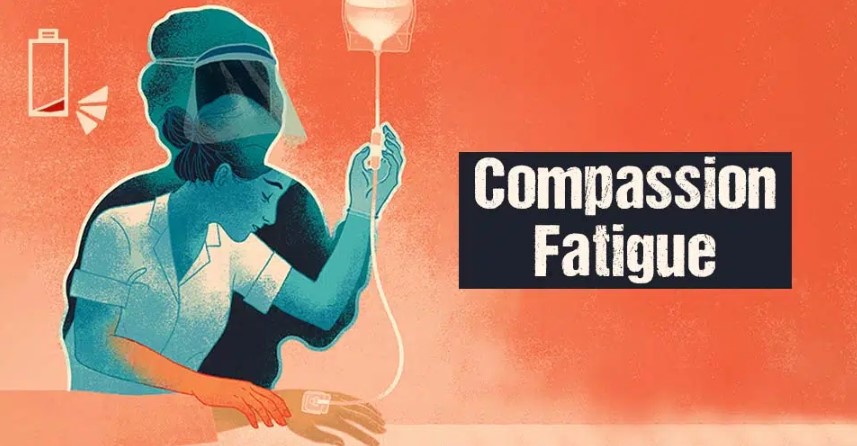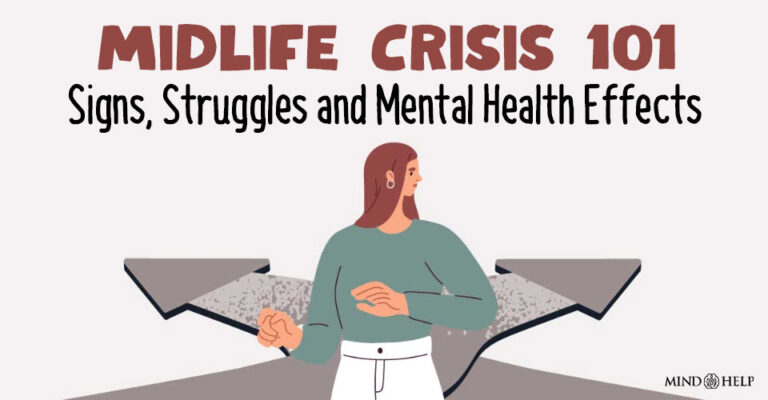Compassion fatigue is a state of mental and physical exhaustion that arises in caregiving or helping professions. The term is closely related to burnout, but it specifically focuses on the impact of witnessing and empathizing with the suffering of others on a regular basis.
What Is Compassion Fatigue?
Compassion fatigue is a psychological and emotional condition that arises from prolonged exposure to the suffering and distress of others, particularly when involved in caring for or supporting them. It commonly affects individuals in professions 1 Cocker, F., & Joss, N. (2016). Compassion Fatigue among Healthcare, Emergency and Community Service Workers: A Systematic Review. International journal of environmental research and public health, 13(6), 618. https://doi.org/10.3390/ijerph13060618 such as healthcare workers, first responders, social workers, therapists, and other caregivers.
The concept is rooted in the idea that consistently empathizing with others’ pain and trauma can lead to emotional exhaustion, reduced ability to empathize, and a general sense of being overwhelmed.
It is crucial to distinguish compassion fatigue from general fatigue. While general fatigue is the feeling of tiredness resulting from physical or mental exertion, compassion fatigue is specific to the emotional toll of witnessing or hearing about the suffering of others.
The effects of compassion fatigue manifest as feelings of detachment, numbness, and even a decline in job satisfaction. It can also have adverse effects on personal relationships and overall well-being.
Warning Signs Of Compassion Fatigue
Some warning 2 Stoewen D. L. (2020). Moving from compassion fatigue to compassion resilience Part 4: Signs and consequences of compassion fatigue. The Canadian veterinary journal = La revue veterinaire canadienne, 61(11), 1207–1209. signs of compassion fatigue include:
- Persistent feelings of exhaustion and fatigue
- Emotional numbness or detachment from others
- Decreased empathy and compassion towards those you care for
- Difficulty concentrating and making decisions
- Increased irritability and impatience
- Feelings of hopelessness or helplessness
- Insomnia or other sleep disturbances
- Recurring nightmares or intrusive thoughts related to work experiences
- Avoidance of situations or people that remind you of work
- Physical symptoms such as headaches, stomach issues, and muscle tension
- Increased use of substances (e.g., alcohol, drugs) to cope with stress
- Loss of enjoyment in activities that used to bring pleasure
- Social withdrawal and isolation
- Decline in job performance and productivity
- Relationship conflicts and difficulty maintaining personal connections
Read More About Empathy Here
Compassion Fatigue And Mental Health
Compassion fatigue and mental health are intricately related 3 Gustafsson, T., & Hemberg, J. (2022). Compassion fatigue as bruises in the soul: A qualitative study on nurses. Nursing ethics, 29(1), 157–170. https://doi.org/10.1177/09697330211003215 . It leads to increased stress, anxiety, and depression, causing emotional exhaustion and burnout. Caregivers may struggle to empathize with others’ suffering, feeling emotionally numb and detached.
Read More About Anxiety Here
This emotional depletion hinders their ability to provide effective care and support, resulting in reduced job satisfaction and motivation. Compassion fatigue can also impact personal relationships, causing irritability and difficulty connecting with loved ones.
Individuals experiencing compassion fatigue may face challenges in decision-making and suffer from insomnia and other sleep disturbances. Moreover, they may be at a higher risk of developing mood disorders and post-traumatic stress symptoms 4 Wolotira E. A. (2023). Trauma, Compassion Fatigue, and Burnout in Nurses: The Nurse Leader’s Response. Nurse leader, 21(2), 202–206. https://doi.org/10.1016/j.mnl.2022.04.009 .
As their empathy declines, caregivers may find it harder to offer compassionate care, both in their professional and personal lives, affecting their emotional resilience and coping abilities.
Stages Of Compassion Fatigue
The different 5 Gustafsson, T., & Hemberg, J. (2022). Compassion fatigue as bruises in the soul: A qualitative study on nurses. Nursing ethics, 29(1), 157–170. https://doi.org/10.1177/09697330211003215 stages of compassion fatigue include:
1. The Caring Stage:
This initial stage involves enthusiasm and passion for helping others. Caregivers often feel energized and dedicated to their roles, experiencing a sense of fulfillment from providing support and care.
2. The Warning Signs Stage:
At this point, caregivers may start to notice warning signs of compassion fatigue. They might feel drained, fatigued, or experience difficulty sleeping due to the emotional toll of caregiving. However, these signs are often overlooked or attributed to temporary stress.
3. The Cognitive Stage:
During this stage, caregivers may begin to experience cognitive symptoms, such as reduced concentration and increased forgetfulness. They might struggle to focus on their tasks and make more mistakes than usual.
4. The Emotional Stage:
Emotional symptoms become more pronounced in this stage. Caregivers may feel overwhelmed, irritable, anxious, or detached from their emotions. They might also experience mood swings and increased emotional sensitivity.
5. The Behavioral Stage:
As compassion fatigue progresses, caregivers may display changes in behavior. They might withdraw from social interactions, become less engaged at work, and show signs of cynicism or negativity towards their patients or colleagues.
Read More About Behavioral Change Here
6. The Physical Stage:
Physical symptoms become apparent at this stage, which can include headaches, gastrointestinal issues, increased susceptibility to illnesses, and chronic fatigue.
7. The Crisis Stage:
In this final stage, compassion fatigue reaches a critical point, and caregivers may experience a state of emotional and physical collapse. They might feel hopeless, detached, and may even consider leaving their caregiving role.
Causes Of Compassion Fatigue
The common 6 Cetrano, G., Tedeschi, F., Rabbi, L., Gosetti, G., Lora, A., Lamonaca, D., Manthorpe, J., & Amaddeo, F. (2017). How are compassion fatigue, burnout, and compassion satisfaction affected by quality of working life? Findings from a survey of mental health staff in Italy. BMC health services research, 17(1), 755. https://doi.org/10.1186/s12913-017-2726-x causes of compassion fatigue include:
1. Work-Related Causes:
Regular exposure to distressing events, heavy workload, lack of support, high job demands, unresolved cases, and inadequate training can contribute to compassion fatigue.
2. Personal and Psychological Factors:
High empathy levels, history of trauma, over-identification with patients/clients, perfectionist tendencies, poor self-care, and ineffective coping mechanisms increase vulnerability to compassion fatigue.
3. Organizational Factors:
Poor communication, staff turnover, inadequate resources, and a dismissive organizational culture can exacerbate compassion fatigue.
4. Cultural and Societal Factors:
Stigma surrounding mental health, societal expectations of constant empathy and selflessness, and limited awareness of compassion fatigue contribute to its prevalence.
Recognizing And Assessing Compassion Fatigue
Recognizing and assessing 7 Ondrejková, N., & Halamová, J. (2022). Qualitative analysis of compassion fatigue and coping strategies among nurses. International journal of nursing sciences, 9(4), 467–480. https://doi.org/10.1016/j.ijnss.2022.09.007 the effects of compassion fatigue is crucial for healthcare professionals and caregivers to maintain their well-being while providing support to others.
Clinical tools designed to identify compassion fatigue include standardized self-assessment questionnaires, such as the Professional Quality of Life (ProQOL) scale, which measures compassion satisfaction, burnout, and secondary traumatic stress.
Additionally, healthcare organizations may implement wellness check-ins and regular debriefing sessions to monitor and address potential signs of compassion fatigue among their staff.
Coping With Compassion Fatigue
Consider the following measures 8 Paiva-Salisbury, M. L., & Schwanz, K. A. (2022). Building Compassion Fatigue Resilience: Awareness, Prevention, and Intervention for Pre-Professionals and Current Practitioners. Journal of health service psychology, 48(1), 39–46. https://doi.org/10.1007/s42843-022-00054-9 for coping with compassion fatigue:
- Identifying emotional exhaustion and signs of burnout caused by extended periods of caring for others.
- Creating healthy boundaries to protect personal well-being while maintaining empathy.
- Seeking professional support and counseling to process emotions and experiences.
- Practicing self-care activities to recharge and replenish emotional reserves.
- Engaging in hobbies and activities outside of caregiving to find balance.
- Connecting with a support network or peer group to share experiences and emotions.
- Utilizing relaxation techniques like mindfulness or meditation to reduce stress.
- Recognizing and accepting limitations, understanding it’s okay to seek help when needed.
- Learning to say no and prioritize self-care without guilt.
Read More About Mindfulness Here
Takeaway
Compassion fatigue is a significant challenge faced by caregivers and healthcare professionals who provide support and care to others. It arises from prolonged exposure to the suffering and distress of others, leading to emotional exhaustion, reduced empathy, and feelings of overwhelm. Recognizing the warning signs and stages of compassion fatigue is essential in addressing its impact on mental health and well-being.
At A Glance
- Compassion fatigue is a psychological and emotional condition that emerges from prolonged exposure to the suffering of others.
- Compassion fatigue and mental health are linked, triggering emotional exhaustion, reduced empathy, and feelings of overwhelm.
- Recognizing the stages and signs of compassion fatigue is crucial in addressing its impact on well-being.
- Clinical tools like the ProQOL scale can aid in assessing the causes of compassion fatigue.
- Strategies for coping with compassion fatigue include self-care, setting boundaries, seeking support, and engaging in relaxation techniques.
Frequently Asked Questions (FAQs)
1. What are the ABCs of compassion fatigue?
The ABCs of compassion fatigue are Awareness, Balance, and Connection, focusing on recognizing the signs, maintaining a healthy lifestyle, and seeking support to cope with the emotional toll of caring for others.
2. Is there a cure for compassion fatigue?
There is no definitive cure for compassion fatigue, but it can be managed effectively through various strategies and support systems.
3. What are the 2 parts of compassion fatigue?
The two parts of compassion fatigue are primary trauma, which arises from direct exposure to others’ suffering, and secondary trauma, which results from indirect exposure to traumatic experiences through others’ accounts.















